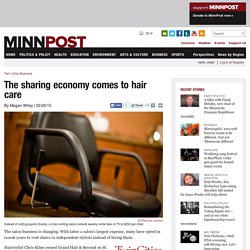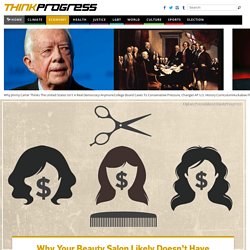

User Experience Basics. User experience (UX) focuses on having a deep understanding of users, what they need, what they value, their abilities, and also their limitations.

It also takes into account the business goals and objectives of the group managing the project. UX best practices promote improving the quality of the user’s interaction with and perceptions of your product and any related services. Factors that Influence UX At the core of UX is ensuring that users find value in what you are providing to them. Peter Morville represents this through his User Experience Honeycomb He notes that in order for there to be a meaningful and valuable user experience, information must be: Areas Related to Building the User Experience UX is a growing field that is very much still being defined. UX Design Defined - User Experience - UX Design. User Experience Design (UXD, UED), Interaction Design (IxD), User Interface (UI) Design and other web/application design professionals use the term User Experience Design to refer to the judicious application of certain user-centered design practices, a highly contextual design mentality, and use of certain methods and techniques that are applied through process management to produce cohesive, predictable, and desirable effects in a specific person, or persona (archetype comprised of target audience habits and characteristics).

All so that the affects produced meet the user’s own goals and measures of success and enjoyment, as well as the objectives of the providing organization. This is not the only definition of User Experience Design. The term was coined by Don Norman while he was Vice President of the Advanced Technology Group at Apple.
In his own words: “I invented the term because I thought human interface and usability were too narrow. UX Design Is Contextual Design 1. Welcome to Forbes. The Chair/Suite Rental Phenomenon. How to Launch a Business in the Sharing Economy. This story first appeared in the January 2015 issue of Entrepreneur.

To receive the magazine, click here to subscribe. As a tech executive who often traveled on business, Aaron Easterly was constantly asking friends and family to care for Caramel, his beloved Pomeranian. “I would never take her to a kennel, so I’d go frantically down the list of family, friends and neighbors every time a business trip came up,” he says. “This was just one of those areas that felt frustratingly broken.” Intrigued by the growing popularity of peer-to-peer platforms like Airbnb and Uber, Easterly sensed that there was an untapped market for other dog owners who didn’t wish to utilize commercial kennels or daycare services. In 2011 he launched Seattle-based Rover, which connects pet owners needing boarding or sitting services with a network of prescreened dog lovers for hire. Easterly is not alone. Beth Buczynski, author of Sharing Is Good. Think you know what will be the Airbnb of fill-in-the-blank?
1. Sit! Can the Sharing Economy Provide Good Jobs? The sharing economy comes to hair care. Instead of cutting payroll checks, a chair-renting salon collects weekly rental fees of 75 to $250 per chair.

The salon business is changing. With labor a salon’s largest expense, many have opted in recent years to rent chairs to independent stylists instead of hiring them. Hairstylist Chris Kline owned Grand Hair & Beyond on St. Paul’s Grand Avenue for 26 years, where he experimented with both staff and rental models. Kline says employee-business model salons that are doing well operate on a 5 percent profit margin, but switching to a rental chair model increases that profit margin to 10 to 12 percent by slashing labor and, oddly, insurance costs. “Most independent salons are pretty much just running on a cash-flow basis,” says Kline. Staff stylists start around $9 to $10 an hour and advance to straight commission—at a rate of 40 to 55 percent, depending on the salon and the stylist’s tenure.
Building a robust and loyal clientele helps stabilize income for both stylists and salons. Why Your Beauty Salon Likely Doesn't Have Any Employees. By Bryce Covert Chandra Dagulin was drawn to the beauty industry as an outlet for artistic expression and a way to earn a living.

“I’m a creative person from a working-class upbringing and had been on my own off and on since I was 16,” she said. So she was in pursuit of a calling that “paid well enough to keep me off the streets and out of strip clubs,” given how plentiful they are in her hometown of Portland, Oregon. She’s now been in the industry for over ten years and has experienced nearly every salon model out there. Few have served her well.
Chandra Dagulin CREDIT: Chandra Dagulin One day, a father came in with his daughter, who had dyed her own hair black, looking to get it turned back to blond — a lengthy and costly procedure, which Dragulin said she explained to him. Dragulin’s experiences in the industry have been so negative that they’ve impacted both her finances and her mental health. When Flexibility Turns Into Financial Vulnerability CREDIT: Dylan Petrohilos/ThinkProgress. SISC%20Hairdressing%20Snapshot%202014%20FA2%20MR.pdf.